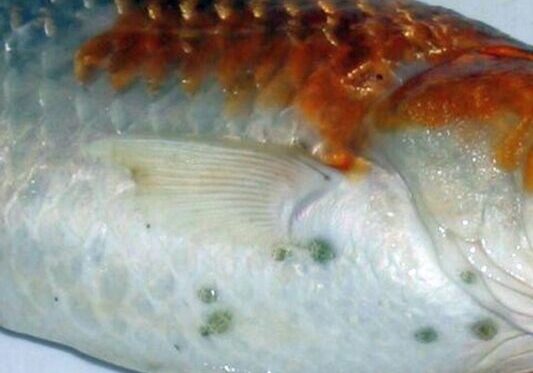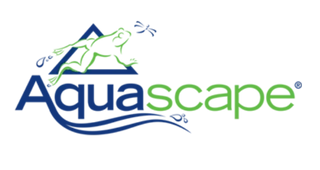It all starts here!!
Having a good starting foundation for your pond is key to maintaining healthy koi and a thriving ecosystem. It is recommended that koi ponds should be deep-cleaned once a year to remove any muck, debris and algae. At RNR Koi, we offer our expertise in pond cleaning, filter cleaning, filter remodels, plumbing work and many more services to ensure your pond will be running at full potential! We also offer a weekly pond maintenance service to ensure a well running pond and happy koi all year round!
We offer pond maintenance to Fresno County, CA
Annual Pond and Filter Cleaning
What is beneficial bacteria?
Beneficial bacteria for ponds occur naturally in freshwater and are the microbes responsible for processing dead organic material. There are many different types of pond bacteria, which work in different ways to break down organic compounds. Aerobic pond bacteria use oxygen and rapidly break down organic compounds. Beneficial bacteria is a necessity for all thriving ponds and important to know that beneficial bacteria is hard to grow in the cold and easy to build in the warm!
During spring is when most ponds open back up, koi become more active and parasites also awaken too! This is the prime time for an annual pond cleaning to keep a healthy pond healthy. Our pond and filter cleaning depends on the condition of your pond, but no job is too small or too large! We’ve seen it all and have expertise in providing services to your pond's specific needs!
Weekly Pond Maintenance
Water Quality Management
Water quality is often overlooked and highly important in pond management. Poor water quality can lead to common problems, such as excessive algal blooms, overgrowth of plants, noxious smells, or dead and dying fish.
What we check for:
Ammonia
What is ammonia?
Ammonia is the major end product in the breakdown of proteins in fish. Fish digest the protein in their feed and excrete ammonia through their gills and in their feces.
What causes ammonia?
The primary cause of ammonia in ponds is the waste excreted by fish and more particularly from the breakdown of protein in their food. Examples would consist of over feeding your koi or not having an established filter.
PH
What is PH?
pH stands for "potential hydrogen" and measures the levels and activity levels of a substance's hydrogen ions. More hydrogen ions lead to a lower pH value (or more acidic). Fewer hydrogen ions lead to a higher pH value (or more basic or alkaline).
What causes a spike or drop in PH?
A pond's pH can drop or spike due to several factors, most commonly caused by fluctuations in algae levels (which consume carbon dioxide, raising pH during daylight), decaying organic matter (which releases carbon dioxide, lowering pH), high levels of carbon dioxide from the atmosphere, changes in temperature, and the presence of chemicals like pesticides or fertilizers.
Nitrite
Nitrite is a naturally occurring chemical in your pond and is created through the breakdown of ammonia by bacteria in your pond as part of the Nitrogen cycle. The main causes of high nitrites are: immature or damaged biological filters or over stocking of fish.
What causes Nitrites?
Nitrites get into pond water when bacteria break down ammonia, which is created by fish waste and respiration, as part of the nitrogen cycle.
Nitrate
What are nitrates?
Nitrates are the final breakdown stage. Nitrate is a form of nitrogen that is a natural byproduct of the breakdown of ammonia and nitrites in pond water. It is produced by beneficial bacteria in the water and filters as they break down the toxic waste products of fish. This is also the final breakdown in the cycle.
What causes Nitrates?
Nitrates show how well your filter is removing ammonia from the pond water. Ammonia gets converted into nitrates through the natural nitrogen cycle by bacteria. Examples would consist of needing to clean or update the way your filtration is running.
Nitrite vs Nitrate
Nitrates are the "final stage" of the nitrogen cycle, while nitrites are an intermediate stage that needs to be converted into nitrates by bacteria.
Algae Control
There are three main types of algae: green water (microscopic), string or hair algae (filamentous algae), and blue-green algae (cyanobacteria). Each type has different characteristics and requires different control methods. Algae can quickly overtake your pond, disrupting its natural balance and creating an unsightly appearance. RNR koi uses targeted treatments to eliminate unwanted growth and restore clarity to your water. By utilizing environmentally friendly methods, we ensure that your pond remains healthy without harming the surrounding ecosystem.



Debris Removal
Leaves, sticks, and other organic materials can accumulate in your pond, affecting its appearance and blocking filtration systems. By removing this debris it will help remove that tea-colored water tint ensuring your pond stays crystal clear. Weekly cleaning of debris from the bottom of the pond, skimmers, bottom drains and pump baskets regularly will help water flow and keep the pond circulating at its capacity. This will also help prevent larger issues down the line.
Fish Health
Koi Pond Health Management
Koi fish are sensitive to changes in water quality, temperature, and oxygen levels. Our team specializes in koi pond health, monitoring your fish's environment to prevent illness and promote vibrant, healthy fish. We provide routine check-ups and are equipped to handle any health concerns that arise.
Water Quality
It is highly important to check the water quality of your pond often to prevent sickness of your koi. Oftentimes Koi will tell you when they are unhappy in their environment and knowing what is wrong is half the battle! Overfeeding, overstocking, bad filtration and no beneficial bacteria are all examples of why water quality might take a turn for the worse.
Temperature
Koi fish cannot fluctuate between colder and warmer water temperatures. It's important to acclimate your fish when transporting or if building a new pond, making sure the pond is at least 4-feet deep. It is also important not to have koi in direct sunlight as koi can get sunburned too!
Oxygen
Koi need aeration in ponds to provide oxygen for their health and survival. Aeration also helps to keep the water clean and prevent algae growth. Whether you have an air pump or waterfall, the water must have some type of break on the surface to provide oxygen to the koi.
Parasites
There are many different types of parasites that can arise in your pond. Parasites can over take your pond by not quarantining your new koi, wild animals visiting your pond, or infected plants. Listed below are common parasites.
- Protozoa: Ich (Ichthyophthirius multifiliis), Trichodina, Chilodonella cyprini, Epistylis, Heteropolaria, Ichthyobodo necator.
- Trematodes (Flukes): Skin Flukes (Gyrodactylus), Gill Flukes (Dactylogyrus)
- Crustaceans: Anchor worms (Lernaea cyprinacea), Gill Maggots (Ergasilus), Fish Lice (Argulus foliaceus)

Bacterial and Fungal
Having poor water quality, organic overload of the environment, handling and transporting of koi fish,temperature changes,or other stressful conditions can all lead to bacterial and fungal infections. Listed below are common bacterial and fungal infections.
- Fin rot: A common infection that attacks the fins, tail, and body of the fish. It's caused by bacteria like Aeromonas and Vibrio, and is often due to poor water quality.
- Mouth rot: A bacterial infection that eats away at the tissue around the mouth. It's usually caused by damage to the mouth, such as from rubbing against the sides of the tank.
- Ulcers: Can start as a red, raised patch of scales or a small, bluish-white spot. If left untreated, the ulcer can progress to a hole in the fish's body and eventually reach the organs.
- Dropsy: Can be caused by bacterial infections or parasites.
- Columnaris: Caused by the bacterium Flavobacterium columnare.
- Cyprinid herpesvirus-1: Also known as carp pox, this virus causes irregular skin growths, but is not usually harmful to the koi's overall health.
- Cyprinid herpesvirus-3: Also known as Koi Herpes Virus, this virus is highly contagious and can kill koi.

Ready to find out more?
At RNR Koi, we believe in the importance of proactive care to sustain your pond's health and beauty. Contact us today to learn more about our comprehensive pond maintenance services.






